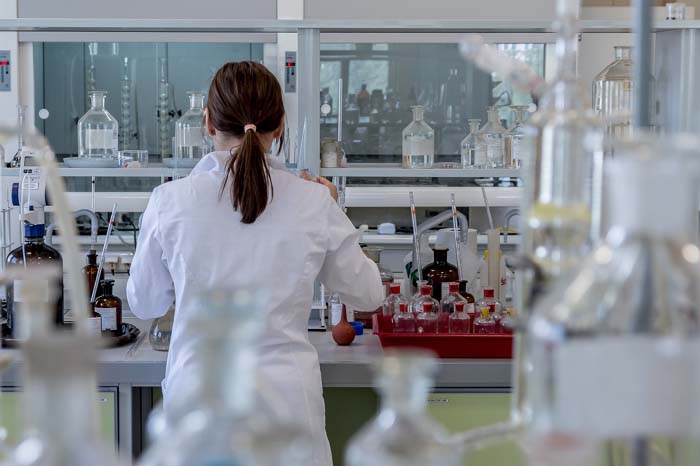
Water treatment is an absolute must in healthcare and hospital establishments to keep patients safe, keep the facility clean, and ensure that all medical equipment and systems work properly. Contaminated water can pose serious threats such as regulatory non-compliance, equipment damage, and infection.
Here are important aspects and best practices in water treatment for health care and hospital establishments.
- Ensuring water quality
Healthcare and hospital establishments must maintain water quality for patient safety, infection control, and the smooth running of the facility as a whole. Healthcare providers, patients, and visitors are all in danger when the water is not clean enough to prevent the spread of disease. To ensure water quality in healthcare facilities, below is a complete guide:
Important Factors to Consider Concerning Healthcare Water Quality:
Standards and Regulations:
- The World Health Organization’s (WHO) and ISO 30500 (water safety) recommendations for water quality are further applicable to international standards.
- Learn the rules and regulations that apply to water quality on a local, regional, and national level.
Water Quality Risks in Healthcare:
- Copper and lead are some examples of heavy metal pollution that can result from plumbing damage or corrosion.
- Industry-produced contaminants or disinfectants can cause contamination.
- There is a risk of bacterial contamination (such as E. coli, Pseudomonas, or Legionella).
Key steps to ensure water quality in health care and hospital establishments:
Monitoring and Testing of Water
- Set up devices that can constantly check important water characteristics. This includes chlorine levels, pH, and temperature.
- Verify the water supply, distribution, and endpoints (such as medical equipment, showers, and faucets) on a regular basis.
Risk Assessment and Management
- Establish monitoring, maintenance, and response procedures as part of a comprehensive risk management strategy.
- Conduct a thorough risk assessment to determine what could go wrong with the water system.
Water Disinfection and Treatment
- To avoid pathogen growth, ensure that disinfection levels throughout the facility are uniform.
- To remove impurities, use water treatment procedures such as filtration, UV disinfection, or chlorination.
Infrastructure and Equipment Maintenance
- To prevent contamination from outside sources, install backflow protection devices.
- To avoid contamination, replace broken or old equipment and pipes.
- Maintain and check water-related infrastructure and plumbing on a regular basis.
Equipment and infrastructure Maintenance
Infection Control Measures
- Make sure there is access to clean water for handwashing.
- Surgery, wound care, and dialysis are just a few examples of medical operations that require sterile water.
- Put measures in place to limit the spread of infection, such as those that deal with water-related illnesses.
Education and Training
All employees need instruction on water safety procedures, including identifying and reporting pollution.
- Ensure everyone in contact with the healthcare facility knows how to clean themselves properly.
Preparedness and Response to Emergencies
Prepare for water pollution situations by developing emergency reaction strategies.
- If there are water quality problems, setting up procedures for informing visitors, patients, and employees is important.
Healthcare and hospital establishments should address these important factors and take the actions mentioned. This will promote a healthy environment for everyone and reduce the risk of waterborne illnesses.
- Treatment Methods
- Reverse Osmosis
Because of its high purity, RO is ideal for use in labs or as a dialysis fluid. It effectively removes organic chemicals and dissolved salts, among other pollutants.
- Softening
Reduce the hardness of the water supply to prevent scale accumulation in medical equipment and pipes. This is crucial for sterilization tools and autoclaves.
- Disinfection
Thorough disinfection is important to eliminate infectious microorganisms. Ozonation, UV light, and chlorination are common methods.
- Filtration
This process entails removing sediments, some pathogens, and particles using membrane filters, sand, or activated carbon.
Water Distribution Systems
In healthcare and hospital establishments, water distribution systems are essential for preventing infections, maintaining a safe environment for employees and patients, and ensuring patient safety. These systems must meet rigorous criteria to maintain water quality and mitigate hazards. The following are some essential features of hospital and healthcare water distribution systems:

- Design and Layout
Hospitals need water distribution systems that prevent stagnation and have proper flow. To minimize risk, storage tanks, low-flow areas, and dead ends must be designed with microbial development in mind. Appropriate piping materials and design procedures are also part of this effort.
- Water quality management
In order to ensure that their patients’ water is safe to drink, hospitals should establish thorough water quality monitoring programs. This process includes temperature control, chemical disinfection, and frequent pollution testing. Some important factors are:
- Temperature Management
Maintaining water at temperatures that prevent the formation of pathogens is important. For hot water systems, this is typically above 60 degrees Celsius.
- Chlorination/Disinfection
This is a chemical process that inhibits the growth of microorganisms.
- Filtration
Implementing suitable filtration methods to eliminate impurities.
- Contagious agents in water
In healthcare institutions, water distribution systems risk retaining infection-causing bacteria such as Pseudomonas and Legionella. Control is essential, as these bacteria can result in serious infections, especially in immunocompromised people.
- Efficiency and Sustainability
Today’s healthcare institutions also prioritize sustainable practices. The goal of designing water distribution systems should be to minimize energy use and water loss while simultaneously meeting all applicable regulatory and safety requirements.
- Emergency Preparedness
Healthcare facilities should have contingency plans for water-related crises, such as water supply contamination incidents or outages. These plans may involve contingency plans for communication, emergency disinfection protocols, and backup water sources to guarantee the safety of both patients and employees.
- Prevention of Infections
Healthcare facilities are particularly vulnerable to the spread of water-related illnesses. Standard procedures for preventing the spread of infection include the following:
- Updates and Maintenance
The system undergoes constant updates and maintenance to guarantee compliance and reliability with rules.
- Procedures for Isolation and Disinfection
Procedures are in place to handle contamination in the event that detection occurs.
- Testing and Sampling of Water
Testing is done regularly for pollutants and pathogens.
- Flush Regularly
Pipe flushing should occur regularly to prevent water from becoming stagnant.
- Training and Education
Employees should receive extensive training in water quality and hazard identification. Familiarity with the layout and functioning of the water distribution system is necessary to prepare for water-related emergencies.
Specialized Water Treatment Requirements for healthcare and hospital establishments
There are a number of reasons why healthcare and hospital establishments must have access to clean water. Access to clean, specialized water is critical for medical procedures, infection control, and patient safety. Healthcare and hospital establishments have specific water needs, including the following:
- Sterilized Water for Medical Equipment:
- Laboratories
Laboratory tests and investigations require high-quality, ultrapure, or deionized water for precise, contamination-free findings.
- Machines for Dialysis
To keep patients safe from infection and pollution, hemodialysis uses ultrapure water.
- Autoclaves and sterilizers
You’ll need to use distilled or filtered water to ensure no impurities ruin the sterilizing procedure.
- Water for the Care of Patients:
- Irrigation and Wound Cleaning
Sterile solutions or another sterile fluid are utilized to keep wounds clean and infection-free.
- Hydrotherapy for Baths and Pools
They must undergo appropriate disinfection and filtration to avoid spreading bacteria and guarantee patients’ safety.
- Potable Water
Visitors, employees, and hospital patients can drink water without harmful contaminants. The water quality should be up to par with or better than the law requires.
- Water for Sanitation and Cleaning
- Certain sanitation and cleaning procedures, such as high-temperature cleaning, may call for water of a particular temperature or quality.
- Properly treated water is needed to keep hospital medical instruments, surfaces, and other equipment clean and to prevent the spread of illness.
- Water for HVAC Systems:
- Large-scale HVAC systems commonly help to control the air quality and climate in healthcare and hospital establishments. Water treatment is necessary for these systems. This is because they use water for humidification and cooling, which can lead to the growth of bacteria like legionella.
- Water for Food Services:
- Clean water is essential for hospitals with food services or cafeterias to cook and prepare food safely. This will guarantee that both employees and patients eat only the best.
- Water for Fire Safety Systems:
- Fire sprinkler systems need routine inspections and maintenance to ensure they work in case of a fire. Water testing is necessary to avoid clogs or corrosion.
- Infection Control and Prevention:
- Hospital-based professional infection control teams are tasked with monitoring water quality and infection control procedures to reduce the risk of hospital-acquired infections. This includes maintaining water systems, conducting regular testing, and eliminating possible pollution sources.
- Adherence to Rules and Regulations:
- Hospitals must follow strict rules and regulations regarding water quality established by the EPA, the CDC, and other pertinent organizations. This compliance aims to avoid legal trouble and ensure patient safety.
By attending to these unique water needs, healthcare and hospital establishments can uphold high standards of operational efficiency, infection control, and patient safety.
Monitoring and Compliance
- Testing Routinely
Hospitals should routinely perform water quality testing, including tests for chemical pollutants, bacterial contamination, and other contaminants.
- Regulatory Compliance
Adhere to all applicable hospital policies and local health and environmental regulations. This involves keeping meticulous records of all procedures that help test and treat water for quality.
Emergency Preparedness
- Regular Simulations and Drills
Regular emergency drills help to determine areas for development and guarantee preparedness.
- Emergency Communication Plan
In order to collaborate with public health officials, emergency responders, and employees during crises, it is important to establish transparent communication procedures.
- Crisis Management
Filtering and treating polluted water, establishing alternative water sources, and notifying authorities should all be part of a hospital’s emergency response protocol in the event of water contamination.
- Workforce Training
Employees should be ready to handle water equipment maintenance, water testing, and treatment operations in an emergency.
- Backup water supplies
Hospitals must have backup plans in the event of a water shortage or pollution problem. Backup water storage tanks or supplier agreements are examples of what could fit into this category.
Collaboration and Partnerships
- Contingency Plans
Prepare to deal with various potential issues, such as a breakdown in the treatment system, supply interruption, or water source pollution.
- Community Outreach
Collaborate with locals to build emergency response partnerships and spread the word about the need to be ready for emergencies.
- Mutual Aid Agreements
Get into pacts with other local medical centers to pool resources and help each other in times of crisis.
- The Prioritization of Water Use
Prioritize emergency water use by addressing important infrastructure, sanitation, and patient care.
- Water utilities and Local Authorities
Establish reliable connections with your area’s emergency management agencies and local water utilities. Work together on ideas for responding to and planning for emergencies.
Conclusion
An effective water treatment strategy in healthcare and hospital establishments has several moving parts. These include constant vigilance, having the right equipment, following all applicable regulations, and being ready for any eventuality. These factors greatly impact maintaining the integrity of medical procedures, ensuring patient safety, and running the institution smoothly.
